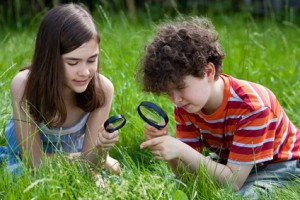An Environmental Concern Hits Close to Home
We hear a lot about the environment these days. Just do a google search on “environmental concerns” and around 12,900,000 links come up in a mere .87 seconds. We worry about the polar bears’ habitat, the impact of wasting water and not recycling, and the consequences of global climate change on nature’s backdrop. These are all worthy causes and concerns that deserve our attention. But, in our zeal to address the natural environment, we often neglect an environment just as important and even closer to home, an environment very dear to my heart. If you are a parent or grandparent, it’s probably dear to your heart as well. I’m talking about the home environment in which our children live and grow. This environment will have a long reaching impact on our children and everything they do. In other words, it will have a long-term impact on our social, political, and environmental world as our children grow up. As a result, the environment in which our children learn and grow needs our full attention. Even better, we create this environment by our efforts and through our interactions. Let me share three things we can do to create the best environment for our children’s growth and maturity.
- Children need a safe environment in which to learn and grow. To keep an environment safe for our children means to keep it clear of anything which poses a significant threat to them at their particular developmental level. This may involve putting up safety gates and installing “baby-proofing” locks on cupboards to keep our toddlers safe. As our children become “middle schoolers,” establishing a safe environment may involve charging cell phones overnight in the kitchen rather than the bedroom. A safe environment also includes plenty of healthy food and sufficient rest. You get the idea. Think ahead and create a safe environment for your children. Creating a safe environment for children also relieves parents of stress. With less stress over their children’s safety, parents can relax and observe their children. They can learn more about their children and grow closer to them each day.
- Children need an environment that is cognitively challenging. This will include age appropriate toys and play objects with which children can interact and problem-solve. Things as simple as building blocks, dress up clothes, and balls provide appropriate stimulation. Even objects in nature like trees to climb, bugs to watch, hills to roll down, and water to play in provide opportunities to problem-solve, negotiate, and create. TV’s and video games, on the other hand, rob our children of the opportunities to problem-solve and create. So, the best environment for our children will limit screen-time and provide plenty of “passive toys” (Read Two Observations on Parenting for more.)
- Children need an emotionally nurturing environment in which to learn and grow. A key ingredient of an emotionally nurturing environment is an attentive parent. The attentive parent possesses keen observation skills. They use this skill to learn of their children’s strengths and weaknesses, to identify their children’s abilities and areas of growth. Their keen eye will identify ways to modify the environment to encourage positive behavior and stimulate growth, provide success and introduce challenges. The emotionally nurturing parent rejoices when their child rejoices and feels sorrow when their child feels sorrow. Yet, because the parents are not overwhelmed by their children’s emotions, they can help their child temper and manage those feelings in a positive way. Read The Wings on Which Your Children Soar to learn more about providing emotional nurturance for your children.
The environment our children encounter in the world can be harsh and cruel. Create a home environment filled with honor, grace, and celebration…an environment of love. Believe me—it will have a global impact. If you want proof of the potential global impact, check out this fascinating study involving hot sauce and attachment: Hot Sauce Vs. the Power of Relationship.
